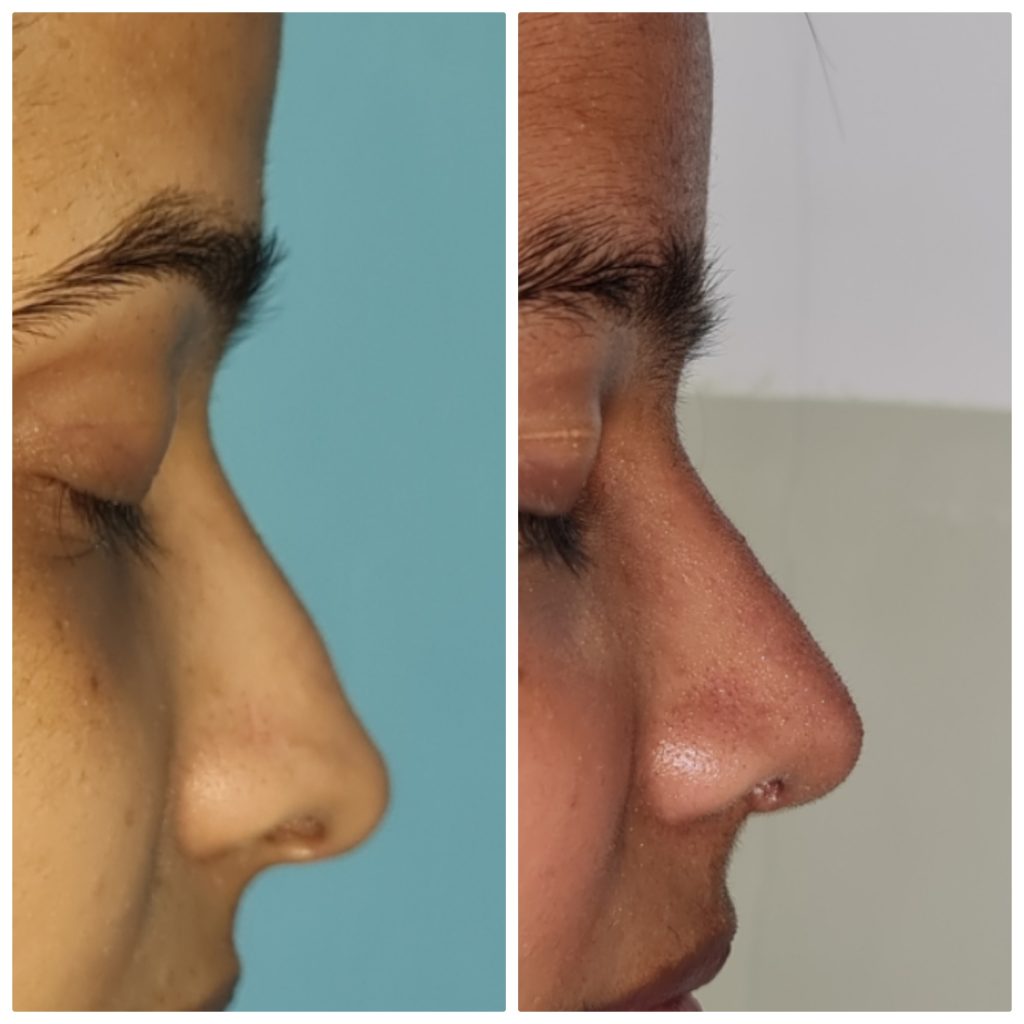Preservation Rhinoplasty

Preservation rhinoplasty is a minimally invasive nose surgery that aims to preserve as much of the existing nasal structures as possible. This results in less disruption of the tissues and reduces the risk of complications associated with more invasive techniques.
Preservation rhinoplasty is a good option for people who want to make subtle changes to the shape of their nose, such as reducing the size of a hump or narrowing the bridge. It can also be used to correct a deviated septum or improve breathing.
The procedure is performed under general anesthesia and typically takes about 2-3 hours. The incision is made in the columella, and the soft tissue envelope (STE) of the nose is then elevated, revealing the underlying bone and cartilage. The surgeon will then make the necessary changes to the bone and cartilage, using sutures or other techniques to reshape them. Septal cartilage is exposed and small strip of triangular shaped cartilage is removed from the dorsal part of septum just underneath the upper lateral cartilage. The STE is then replaced and the incision is closed.
Preservation rhinoplasty typically has a shorter recovery time than traditional rhinoplasty. There may be some bruising and swelling, but this usually resolves within a few weeks.
The benefits of preservation rhinoplasty include:
Minimal tissue disruption: This reduces the risk of complications such as scarring, bleeding, and infection.
Natural-looking results: The surgeon can make subtle changes to the nose that still look natural.
Shorter recovery time: Patients can usually go home the same day and return to work or school within a few days.
The risks of preservation rhinoplasty are similar to those of traditional rhinoplasty and include:
Bleeding
Infection
Scarring
Unnatural-looking results
Need for revision surgery
Preservation rhinoplasty is a safe and effective procedure for people who want to make subtle changes to the shape of their nose. It is important to choose a qualified plastic surgeon who has experience with this technique.
Here are some additional things to keep in mind about preservation rhinoplasty:
The results of the procedure are not always predictable.
The procedure may not be able to correct all of the desired changes to the nose.
There is always a risk of complications, even with minimally invasive procedures.
If you are considering preservation rhinoplasty, it is important to talk to a qualified plastic surgeon about your goals and expectations. The surgeon can help you decide if this is the right procedure for you.